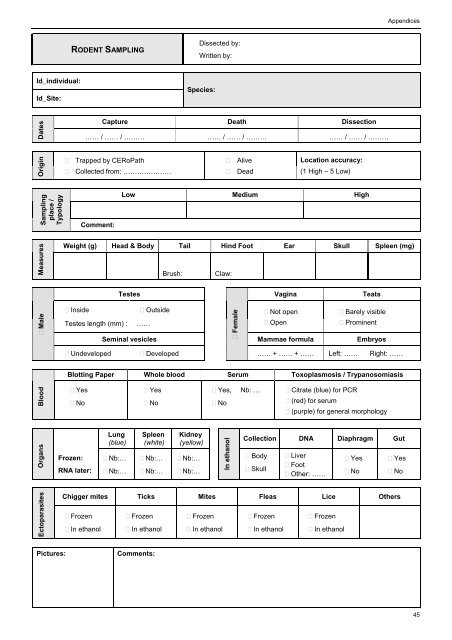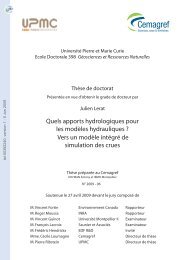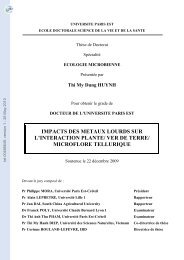Protocols for field and laboratory rodent studies - HAL
Protocols for field and laboratory rodent studies - HAL
Protocols for field and laboratory rodent studies - HAL
- No tags were found...
Create successful ePaper yourself
Turn your PDF publications into a flip-book with our unique Google optimized e-Paper software.
OrgansDatesOriginMeasuresBloodMaleEctoparasitesSamplingplace /TypologyIn ethanolFemaleAppendicesRODENT SAMPLINGDissected by:Written by:Id_individual:Id_Site:Species:Capture Death Dissection…… / …… / ……… …… / …… / ……… …… / …… / ………Trapped by CERoPath Alive Location accuracy:Collected from: ………………… Dead (1 High – 5 Low)Low Medium HighComment:Weight (g) Head & Body Tail Hind Foot Ear Skull Spleen (mg)Brush:Claw:TestesVaginaTeatsInside Outside Not openTestes length (mm) : ……OpenBarely visibleProminentSeminal vesicles Mammae <strong>for</strong>mula EmbryosUndeveloped Developed …… + …… + …… Left: …… Right: ……Blotting Paper Whole blood Serum Toxoplasmosis / TrypanosomiasisYesNoYesNoYes,NoNb: …Citrate (blue) <strong>for</strong> PCR(red) <strong>for</strong> serum(purple) <strong>for</strong> general morphologyLung(blue)Spleen(white)Kidney(yellow)Collection DNA Diaphragm GutFrozen:RNA later:Nb:…Nb:…Nb:…Nb:…Nb:…Nb:…BodySkullLiverFootOther: ……YesNoYesNoChigger mites Ticks Mites Fleas Lice OthersFrozenFrozenFrozenFrozenFrozenIn ethanolIn ethanolIn ethanolIn ethanolIn ethanolPictures:Comments:45
















